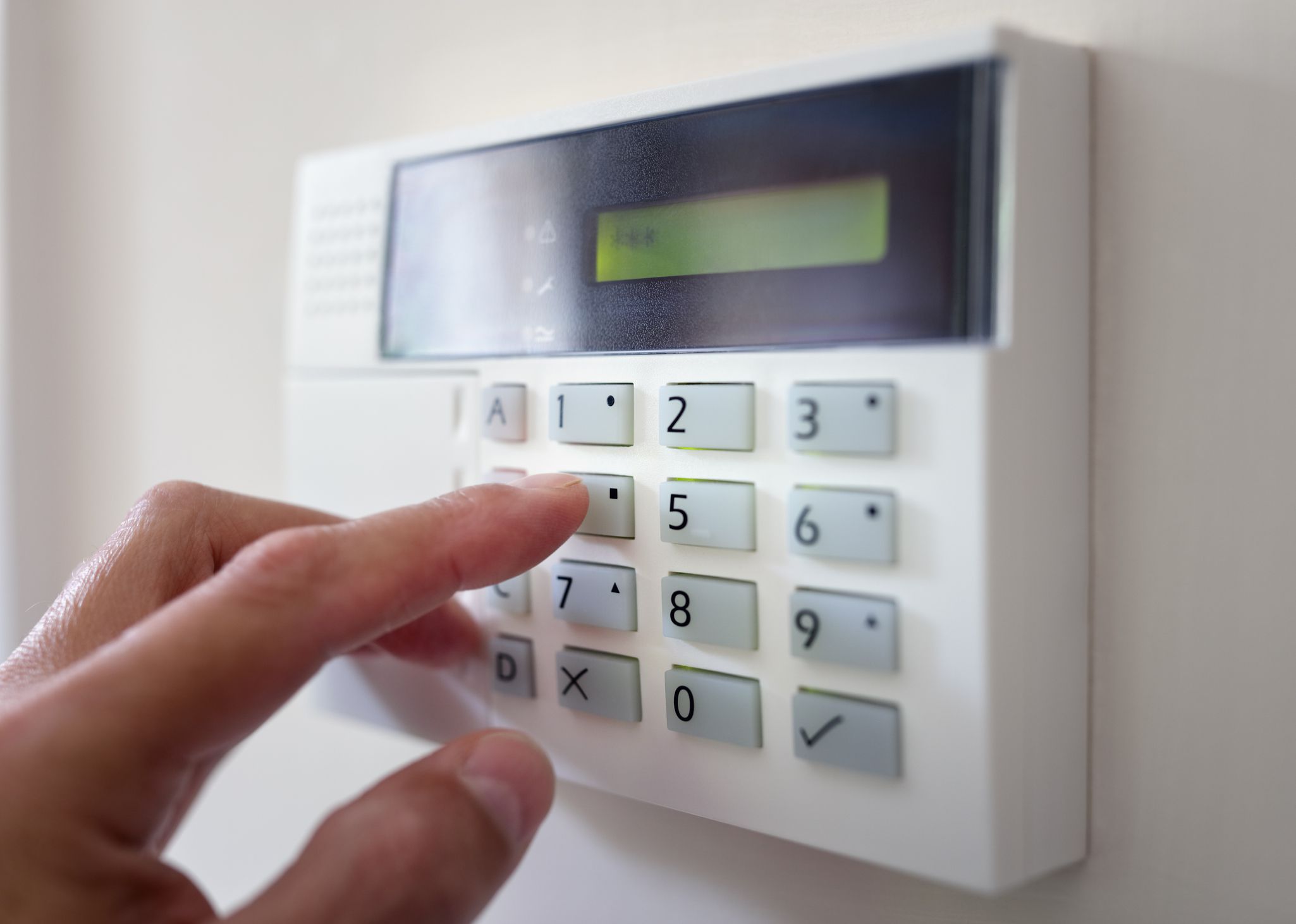Home>Home Security and Surveillance>What Are False Positives In Intrusion Detection Systems


Home Security and Surveillance
What Are False Positives In Intrusion Detection Systems
Modified: March 6, 2024
Learn about false positives in intrusion detection systems and how they can impact your home security and surveillance. Get insights on minimizing false alarms to ensure accurate threat detection.
(Many of the links in this article redirect to a specific reviewed product. Your purchase of these products through affiliate links helps to generate commission for Storables.com, at no extra cost. Learn more)
Introduction
Welcome to the world of home security and surveillance! As technology advances and becomes more integrated into our daily lives, it is essential to prioritize the safety and protection of our homes. One of the key components of a comprehensive home security system is an Intrusion Detection System (IDS).
An Intrusion Detection System is a security mechanism that monitors and analyzes network traffic or activities within a home to detect unauthorized access or malicious behavior. It acts as a digital watchdog, constantly on the lookout for any suspicious activities that could compromise the security of your home.
However, like any technology, Intrusion Detection Systems are not infallible. One common challenge faced by these systems is the occurrence of false positives. False positives refer to situations where an IDS incorrectly identifies a benign action or event as a potential security threat. This can be frustrating and disruptive, as it may trigger unnecessary alarms, leading to wasted time and resources.
In this article, we will explore the concept of false positives in Intrusion Detection Systems and delve into the factors that can contribute to their occurrence. Moreover, we will discuss the impact of false positives on the effectiveness of IDS and explore techniques to minimize their occurrence.
Understanding and addressing false positives is crucial in ensuring the reliability and efficiency of your home security system. So let’s dive in and discover how to optimize the performance of your Intrusion Detection System!
Key Takeaways:
- False positives in home security systems can lead to unnecessary alarms and wasted resources. Regularly updating detection rules and ensuring accurate data can help minimize their occurrence.
- Understanding user behavior and configuring appropriate detection thresholds are crucial in reducing false positives. By implementing these techniques, homeowners can improve the reliability of their security systems.
Read more: What Is Wireless Intrusion Detection
Overview of Intrusion Detection Systems
Intrusion Detection Systems (IDS) play a crucial role in safeguarding our homes by monitoring and analyzing network traffic or activities within a home network to identify potential security threats. There are two main types of IDS: network-based and host-based.
Network-based IDS (NIDS) are deployed at key points within a network and analyze network traffic flowing through those points. They examine packet headers and payloads to detect any anomalous behavior or patterns that may indicate a potential intrusion. NIDS are particularly effective in detecting attacks that occur at the network level, such as network scanning, Denial of Service (DoS), or Distributed Denial of Service (DDoS) attacks.
On the other hand, host-based IDS (HIDS) are installed on individual devices, such as computers or servers, and focus on monitoring activities occurring on those specific hosts. HIDS analyze system logs, file integrity, and user activity to detect any unauthorized or suspicious behavior that may indicate a security breach. They are effective in detecting attacks targeted at specific hosts, like malware infections or unauthorized access attempts.
Both NIDS and HIDS work together to provide a comprehensive security posture for home networks. They complement each other’s capabilities and offer enhanced protection against a wide range of security threats.
The operation of IDS involves three main stages: monitoring, analyzing, and alerting.
Monitoring: The IDS continuously monitors network traffic or host activities, depending on its type, looking for any signs of suspicious behavior. It captures and records relevant data, such as packet headers, payload contents, system logs, or user activities.
Analyzing: The captured data is then subjected to analysis using various techniques like signature-based detection, anomaly detection, or heuristic algorithms. Signature-based detection involves comparing the captured data against a database of known attack patterns, while anomaly detection focuses on identifying deviations from normal behavior. Heuristic algorithms are used to detect previously unseen or emerging threats.
Alerting: If the IDS detects any suspicious activity during the analysis phase, it generates an alert to notify the homeowner or security personnel. The alert can be in the form of an email, SMS, or even triggering a loud alarm within the home.
Overall, Intrusion Detection Systems are an integral part of modern home security setups, working tirelessly to identify and mitigate potential security threats. However, the occurrence of false positives can hinder their effectiveness. In the next section, we will explore the concept of false positives and the factors that contribute to their occurrence.
Understanding False Positives
False positives are a common challenge faced by Intrusion Detection Systems (IDS). They occur when an IDS mistakenly identifies a benign action or event as a potential security threat. In other words, a false positive alarm is triggered when the IDS incorrectly classifies legitimate activities as malicious.
This phenomenon can be frustrating for homeowners and security personnel, as it leads to unnecessary alarms and alerts, wasting time and resources. False positives can also create a sense of complacency, where legitimate security threats may go unnoticed amidst the flood of false alarms.
False positives can be caused by a variety of factors, including:
- Inaccurate or outdated detection rules: IDS relies on detection rules to identify potential threats. These rules may be based on known attack patterns or behavior anomalies. However, if the rules are not regularly updated or adjusted, they may become less effective in distinguishing between legitimate and malicious activities, resulting in false positives.
- Incomplete or noisy data: IDS relies on accurate and clean data to make accurate detections. However, if the data captured by the IDS is incomplete or contains irrelevant noise, it can lead to false positives. This can happen, for example, when there are communication errors between network devices or when there are misconfigurations in host-based IDS setups.
- Overly sensitive detection thresholds: IDS can be configured to be highly sensitive to detect even the slightest deviations from normal behavior. While this may seem like a proactive measure, it can also increase the likelihood of false positives. Setting the detection thresholds too low can result in benign events triggering false alarms.
- Unusual or atypical user behavior: Some IDS systems may flag normal user behavior as suspicious if it deviates from the typical patterns observed. For example, a sudden increase in file transfers or a large number of login attempts may be interpreted as a potential security threat, leading to false positive alarms.
- Lack of context: IDS operates based on algorithms and predefined rules, which may not always take into account the specific context of the home network. Certain activities may be legitimate in one context but appear suspicious in another. Without considering the context, IDS may generate false positives.
It’s worth noting that false positives cannot be completely eliminated, as striking a balance between accurately detecting threats and minimizing false positives is a challenging task. However, there are techniques and best practices that can help reduce the occurrence of false positives in IDS, which we will explore in the next section.
Factors Leading to False Positives
False positives, while frustrating, are an inevitable part of Intrusion Detection Systems (IDS). Understanding the factors that contribute to false positives can help homeowners and security personnel minimize their occurrence and improve the overall effectiveness of the IDS. Let’s explore some of the key factors leading to false positives:
- Inaccurate or outdated signatures: IDS systems often rely on signature-based detection, where they compare network or host activity against a database of known attack signatures. If the signature database is incomplete or not regularly updated, the IDS may generate false positives by misclassifying benign activity as malicious.
- Noisy network or host environment: In a busy home network, there may be various normal activities that generate noise in the network traffic captured by the IDS. This noise can confuse the IDS and result in false positives. Similarly, on a host-based IDS, excessive background processes or software conflicts can trigger false positives.
- Misconfigured IDS rules: IDS rules need to be properly configured and customized for the specific home network environment. If the rules are too generic or overly sensitive, they may flag benign actions as suspicious, leading to false positive alarms. It is crucial to fine-tune the rules to strike a balance between detection accuracy and false positive rates.
- Unusual or atypical user behavior: IDS systems are designed to identify anomalous behavior that could indicate a potential security threat. However, if users engage in unusual or atypical activities, such as accessing new websites or using unfamiliar protocols, the IDS may trigger false positives. Proper user education and awareness can help reduce such false alarms.
- Complex network configurations: Home networks can vary in complexity, with multiple devices, routers, and subnets. If the IDS is not configured to account for these complexities, it may generate false positives due to network misconfigurations or incomplete visibility. Careful network design and proper configuration of the IDS can help minimize these false positives.
- Interactions with third-party applications: In some cases, the IDS may interact with third-party applications or security tools. However, these interactions can sometimes cause conflicts or inconsistencies, leading to false positives. It is important to ensure proper integration and compatibility between the IDS and other security software.
While false positives cannot be completely eliminated, steps can be taken to mitigate their impact. In the next section, we will explore techniques to minimize false positives in Intrusion Detection Systems.
False positives in intrusion detection systems occur when legitimate activities are incorrectly identified as malicious. To reduce false positives, regularly update and fine-tune the system’s rules and thresholds.
Impact of False Positives on Intrusion Detection Systems
False positives can have significant consequences on the effectiveness and efficiency of Intrusion Detection Systems (IDS). While false positives are inevitable to some extent, their impact can be detrimental if not properly managed. Let’s explore the potential impacts of false positives on IDS:
- Reduced credibility: Frequent false positives can undermine the credibility and trustworthiness of the IDS. If the IDS consistently generates false alarms, it may lead to homeowners and security personnel disregarding the alerts and overlooking genuine security threats. This can create a false sense of security and leave the home vulnerable to potential attacks.
- Increased workload: False positives can create an unnecessary burden on homeowners and security teams, requiring them to investigate and respond to alarms that turn out to be false alarms. This can result in wasted time, effort, and resources that could have been better allocated to addressing genuine security threats or improving overall system performance.
- Delayed response time: When an IDS generates numerous false positives, it may lead to delayed response times in addressing genuine security incidents. Homeowners and security personnel may become desensitized to the alarm notifications, causing a delay in taking necessary action. This delay can provide attackers with ample time to exploit vulnerabilities and compromise the security of the home network.
- Loss of productivity: False positives can disrupt normal operations and productivity within the home. False alarms trigger unnecessary alerts, causing distractions and interruptions to daily activities. This can be especially problematic if the false positives occur frequently or during critical periods, such as during work-from-home situations or important family events.
- Wasted resources: False positives can lead to the misuse of valuable resources, such as network bandwidth and storage capacity. IDS systems capture and analyze network traffic or host activities to detect potential threats. If the IDS generates a high volume of false positives, it consumes resources that could have been utilized for more meaningful security tasks or system functionality.
- Loss of trust: Long-term exposure to false positives can erode trust in the IDS and the overall home security system. Homeowners may start questioning the reliability and effectiveness of the system, leading to a loss of confidence in the technology. This can result in a reluctance to invest in future security upgrades or a shift towards alternative security solutions.
Minimizing the impact of false positives is crucial for ensuring the optimal performance and trustworthiness of Intrusion Detection Systems. In the next section, we will discuss techniques to minimize false positives and improve the efficiency of IDS.
Read more: What Is An Audit And Intrusion Detection
Techniques to Minimize False Positives in IDS
Minimizing false positives is essential for improving the overall efficiency and reliability of Intrusion Detection Systems (IDS). While it is challenging to completely eliminate false positives, there are several techniques and best practices that can be employed to reduce their occurrence. Let’s explore some effective techniques to minimize false positives:
- Regularly update detection rules: IDS relies on detection rules to identify potential threats. It is crucial to regularly update and fine-tune these rules to ensure they remain effective in distinguishing between legitimate activities and malicious behavior. Stay informed about emerging threats and adapt the detection rules accordingly.
- Configure appropriate detection thresholds: Setting the detection thresholds too high may result in missed detections, while setting them too low can lead to false positives. Adjust the detection thresholds based on the specific requirements and characteristics of the home network to strike the right balance between detection accuracy and false positive rates.
- Implement anomaly detection: Anomaly detection techniques can help identify behavior patterns that deviate from normal activities. This approach can provide a more proactive way of detecting potential security threats and reduce reliance on signature-based detection, thereby minimizing false positives. Train the IDS to learn the baseline behavior of the home network and flag any deviations as potentially suspicious.
- Ensure accurate and complete data: The quality of data captured by the IDS is crucial in minimizing false positives. Ensure accurate and complete data collection by resolving network communication issues, applying necessary patches and updates to hosts, and reducing noise in network traffic. Utilize data filtering techniques to eliminate irrelevant or duplicate data that may lead to false alarms.
- Contextualize the analysis: Consider the context of the home network when analyzing and interpreting IDS data. Take into account factors such as typical user behavior, time of day, and specific network configurations. What may be deemed suspicious in one context may be perfectly normal in another. Incorporating contextual information can help reduce false positives.
- Implement correlation and validation: Implement correlation techniques to analyze multiple alerts and events together to determine if they collectively indicate a genuine security threat. This helps in reducing false positives that may arise from individual isolated events. Validate alarms against multiple sources of information or cross-referencing with other security tools to improve accuracy and minimize false positives.
- Regularly review and fine-tune the system: Continuously monitor and review the performance of the IDS to identify trends, patterns, and recurring false positives. Make adjustments to the configuration, rules, and thresholds based on the insights gained. Regularly assess and update the system to adapt to evolving threats and changes in the home network environment.
By implementing these techniques and best practices, homeowners and security personnel can significantly reduce false positives in IDS and ensure a more reliable and efficient home security system. Remember, achieving a balance between detection accuracy and false positive rates is key to optimizing the performance of an IDS.
False Positive Examples in IDS
False positives in Intrusion Detection Systems (IDS) can occur in various scenarios, resulting in unnecessary alarms and alerts. While it is impossible to cover all possible false positive situations, let’s explore some common examples:
- Legitimate software or system updates: IDS systems may trigger alarms when legitimate software or system updates occur. For example, a sudden surge in network traffic or changes in system files during a scheduled update can be mistaken as a potential security threat. Properly configuring the IDS to recognize and account for these updates can help minimize false positives.
- Network scans for vulnerability assessments: Vulnerability scanners are commonly used to identify weaknesses in a network. However, IDS may interpret these scans as a potential intrusion attempt, leading to false positives. Adjusting the IDS rules to recognize authorized vulnerability scans can help reduce false alarms.
- Monitoring tools and diagnostics: Certain monitoring tools or diagnostic utilities can trigger false positives in IDS. For instance, network analyzers or packet sniffers can generate suspicious network traffic, causing the IDS to raise alarms. Identifying these tools as trusted entities within the IDS configuration can prevent false positives.
- User behavior anomalies: Unusual or atypical user behavior can result in false positives. For instance, accessing a new website or using an uncommon protocol may trigger an alarm. Educating users about proper network usage and establishing baseline behavior profiles within the IDS can minimize false positives caused by innocent user actions.
- False positives in antivirus or anti-malware scans: IDS and antivirus/anti-malware software can sometimes have overlapping functionalities, leading to false positives. Antivirus scans may flag benign network traffic or normal system files as potential threats, triggering false positives in the IDS. Properly configuring both systems to work in harmony can help reduce false positives in such cases.
- Network misconfigurations: Misconfigurations in the network infrastructure, such as routing or firewall rules, can produce false positives. These misconfigurations can lead to anomalous network behavior, triggering alarms in the IDS. Regular network maintenance and vigilant configuration management can mitigate false positives caused by network misconfigurations.
- Encryption or obfuscation techniques: Encryption and obfuscation techniques designed to enhance security can sometimes be misinterpreted as suspicious activities by the IDS. Traffic encrypted using secure protocols or legitimate obfuscation techniques may trigger false positives. Fine-tuning IDS rules and incorporating encryption and obfuscation keys can help minimize false positives in such cases.
These examples highlight the diverse range of situations where false positives can occur in IDS. It is important to remember that false positives are an inherent part of IDS operation, and mitigating their impact requires a combination of proper configuration, continuous monitoring, and adjustment based on the specific characteristics of the home network.
By being mindful of these examples and implementing the techniques outlined earlier, homeowners and security personnel can work towards minimizing false positives, while maintaining a robust and responsive home security system.
Conclusion
Intrusion Detection Systems (IDS) are critical components of home security, continuously monitoring and analyzing network traffic or host activities to detect potential security threats. However, IDS systems are not immune to false positives, where benign actions or events are incorrectly flagged as malicious. Understanding and addressing false positives is crucial for ensuring the reliability and effectiveness of IDS.
In this article, we explored the concept of false positives in IDS and discussed the factors that contribute to their occurrence. We also examined the impact of false positives on IDS performance, including reduced credibility, increased workload, delayed response time, and loss of productivity and resources. False positives can also erode trust in the IDS and the overall security system.
To minimize false positives, we discussed various techniques and best practices. These include regularly updating detection rules, configuring appropriate detection thresholds, implementing anomaly detection, ensuring accurate and complete data, contextualizing the analysis, implementing correlation and validation methods, and regularly reviewing and fine-tuning the IDS system.
We also provided examples of common false positives, such as legitimate software updates triggering alarms, user behavior anomalies, and false positives in antivirus scans. Understanding these examples helps homeowners and security personnel in identifying and addressing false positives specific to their home network environment.
In conclusion, while false positives cannot be completely eliminated, by implementing the techniques mentioned in this article, homeowners can significantly reduce their occurrence and improve the efficiency of their IDS. Striking a balance between detection accuracy and false positive rates is key to optimizing IDS performance and assuring the security of our homes.
By staying informed, remaining vigilant, and continuously adapting to emerging threats, homeowners can enhance the effectiveness of their IDS, providing a robust defense against potential security breaches and ensuring the safety and protection of their homes.
Frequently Asked Questions about What Are False Positives In Intrusion Detection Systems
Was this page helpful?
At Storables.com, we guarantee accurate and reliable information. Our content, validated by Expert Board Contributors, is crafted following stringent Editorial Policies. We're committed to providing you with well-researched, expert-backed insights for all your informational needs.














